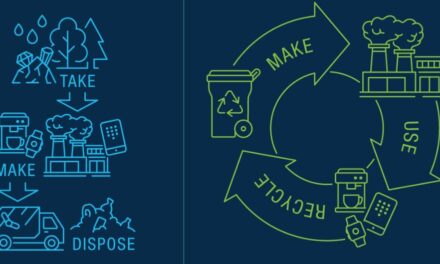“Joining Forces” – The Benefits of CRM and ERP Integration
By Matthew Gibson, Dynamics 365/CRM Solutions Consultant, HSO
 In the past, many large enterprises have felt the need to choose between ERP and CRM. They didn’t feel they could justify the expense of implementing both, let alone integrating them together. Often, the choice of which system to implement came down to whether the organisation saw its profit drivers as being internally or externally-driven.
In the past, many large enterprises have felt the need to choose between ERP and CRM. They didn’t feel they could justify the expense of implementing both, let alone integrating them together. Often, the choice of which system to implement came down to whether the organisation saw its profit drivers as being internally or externally-driven.
A sales-focused organisation might have decided it would gain a greater advantage from an external-looking system like CRM. The differentiator for these kinds of organisations, after all, is external relationships – and that’s where a CRM system comes into its own. An electronics manufacturer, on the other hand, might have felt that the efficiency of its internally-focused systems, in terms of selling a less expensive product with fewer flaws, or in testing the latest circuit boards, was more important to its profitability, and opted for ERP.
Historically, even those businesses that chose to buy both ERP and CRM typically did not integrate them. Many decided to opt for ERP but then added mini-CRM systems into the mix. This gave them some basic CRM functionality without having to expend time and effort in integrating them. But in deciding not to bring the two solutions together, they were also limiting the functionality they got from both.
Today, all this is changing. To an extent, it is being driven by increased competition across the business environment. Even previously inward-looking companies, like many electronics manufacturers have been, are becoming more service-led. In line with that, they are beginning to appreciate the benefits of reacting quickly to market changes and of being in tune with their customers. As a result, they are starting to see the benefits of CRM, ERP integration.
At the other end of the spectrum, sales and marketing departments, which used to operate as separate silos, are collaborating more closely to deliver more ‘connected’ customer experience. Integrating CRM and ERP gives them a comprehensive customer view. By linking in field service too, they are effectively ‘closing the loop’ on their delivery of the product or service to the customer.
At the same time, technology has advanced to the point where integration has become easier and more cost-effective and the two areas have therefore moved into closer alignment. Out-of-the-box tools that can be used to configure connections between the two systems are much more prevalent, making connections increasingly easy to achieve. The growing use of the software as a service (SAAS), model is making it easier for businesses to effectively try before they buy new software solutions. The days when organisations thought that even by trying CRM, they would be looking at incurring thousands of pounds in perpetual licence costs before they even started implementing the software, are now long gone. Today, they can typically trial a few users for a period of a few months at a minimal cost before they take the plunge and implement full systems.
Those are some of the key drivers for implementing CRM and ERP and integrating the two but what are the main benefits businesses could potentially achieve from doing this?
Gauging the Benefits
Following on from GDPR going live, many organisations remain focused on compliance issues. To be fully aligned with the stipulations of the new regulation, businesses effectively need a single customer view. It is no longer viable for them to have one silo in one place where they maintain records of all their customer emails and account executive interaction and another containing customer mailing addresses, for example. That’s because in the post-GDPR world, if a customer contacts the organisation and asks to see all the data they hold on them, or updates their preferences to say please don’t contact me again, many businesses will struggle to carry out appropriate action across all the different data silos they hold.
That’s arguably the most topical benefit that CRM and ERP integration delivers but the most important is the enhanced intelligence and competitive advantage it brings. Poor integration often mitigates against this for businesses. As an example, let’s take a typical scenario that an electronics manufacturer might encounter. ERP is often key to a business like this. Its where they earn their money and make savings from automating processes like traceability and order management. However, the manufacturer’s marketing team are likely to be using the company CRM data, and if it is not integrated with its ERP system, that may cause problems. If, for example, the business asks marketing to set up a campaign for everyone who has ordered a certain product in the last year, it will be difficult to achieve without ERP/CRM integration. To do it, the business would have to ask its ERP team to take time out of their crowded schedules to extract or export the data or create relevant Excel spreadsheets.
It is an inhibitor to efficient performance that negatively impacts the organisation’s competitiveness. For a crucial period, salespeople are not aware if products or services have been delivered and everybody in the organisation misses out on important intelligence that could help them achieve competitive edge.
CRM and ERP integration also helps organisations by reducing the need for manual reworks. The mental energy used in repeatedly switching between two different systems is significant. If CRM and ERP are not integrated, users will often have to switch between the two and more potentially production time will be lost. The impact in terms of lost morale is likely to be considerable too as workers become bored by the mundanity and repetitiveness of the work. Employee loyalty will be reduced and staff churn levels rise.
Positive Future
Businesses are increasingly moving away from the historical perception that there was a need to choose between CRM and ERP. Organisations across the world are now seeing the benefits of implementing both and then integrating them together to deliver operational efficiencies, enhanced customer engagement and greater business advantage. Technological advances and drivers like business agility, enhanced business intelligence and improved compliance are all joining forces to herald a new, efficient age of CRM.













